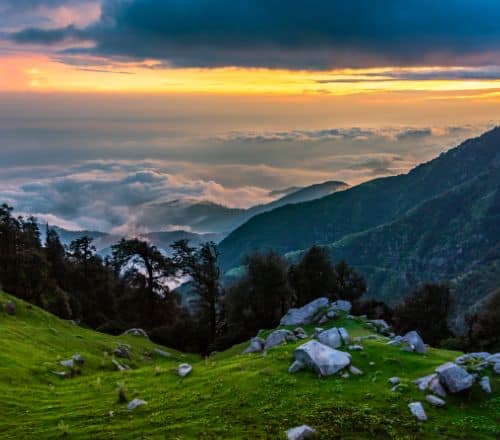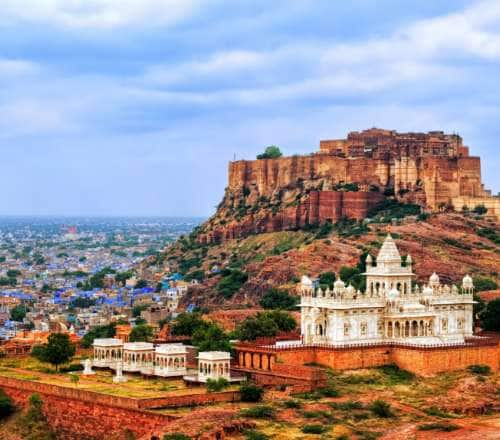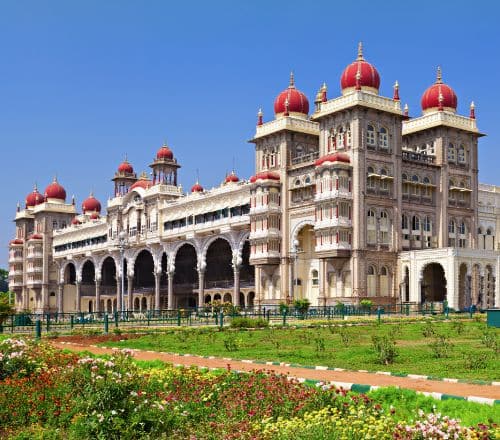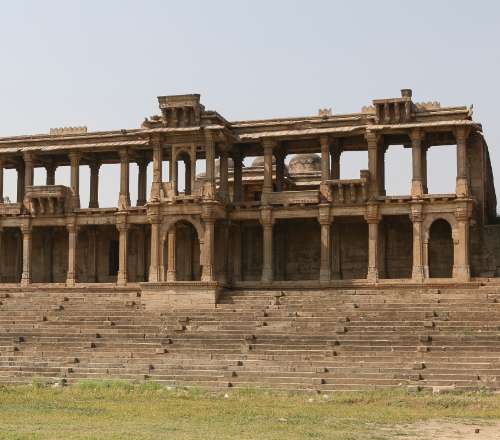Stay logged in to proceed with bookings, orders and offers.
On changing the terminal, you will loose items in your cart. Are you sure you want to change your terminal?
Once on the verge of extinction, Asiatic lions now thrive royally in the vivid wilderness of Gir National Park. A visit to this treasured sanctuary should be a must on your bucket list.
If you, too, feel the same way about the king of the jungle, Gir National Park in Gujarat should be your next destination for a wildlife getaway. Gir National Park, located in Gujarat, is the last remaining natural habitat of Asiatic lions. Also called Sasan Gir, the National Park is close to the historic Somnath Temple. It also happens to be the only place outside of Africa where lions can be seen thriving in the wild. Over the years, the charm of witnessing these majestic beings has drawn many wildlife enthusiasts, photographers, and nature lovers from all around the world. The forest is home to many species of flora and fauna, some of which are endangered. A visit to Gir National Park will replenish your connection with mother nature in a new, never-felt-before way.
Gir was once the erstwhile private hunting ground of the Indian royalty of Junagarh. It is now a protected haven for the last of the Asiatic lions. The total area is spread over 1,410 sq km of which 260 sq km is a National Park and 1,150 sq km is a wildlife sanctuary. As per the 2015 census, Gir is home to 523 lions. The count includes 109 males, 201 females, and 213 cubs. Before 1965, trophy hunting practices nearly brought the Asiatic lions to extinction. In that year, the combined efforts of wildlife activists, NGOs, and government ministries ensured the establishment of Gir National Park and Wildlife Sanctuary. Gone are the days when our forefathers felt pride in showing off hunted lion heads hung up high on their walls. Now we choose to take joy in cherishing these lovely animals in their natural habitats—surviving and thriving.
Although Gir is globally known for its lion population, the National Park protects many other species as well. The carnivores of Gir include the Asiatic lion, Indian leopard, Golden Jackal, Bengal Fox, Striped Hyena, Jungle Cat, mongoose, and the Honey Badger. Asiatic wildcats and rusty-spotted cats are rare but can be spotted. Gir is also home to the Cheetal Deer, Sambar Deer, Four-horned Antelope, Nilgai, Chinkara or the Indian gazelle, blackbucks, and wild boar. Porcupines, pangolins, and hares can also be found, but they are not easily spotted. Closer to the waters and lowland areas, expect to see mugger crocodiles, marsh crocodiles, tortoises, and monitor lizards. Indian cobras and sometimes pythons can also spotted in the bushy patches of the forest. Gir also boasts of more than 425 species of avifauna, most of which are resident and some migratory. Some of the typical endemic birds found here are the Brown Fish Owl, Indian Eagle-owl, Indian Peafowl, Black-headed Oriole, Crested Serpent Eagle, Crested Hawk-eagle, Brown-capped Pygmy Woodpecker, Crested Treeswift, Indian Pitta, and the endangered Bonelli’s Eagle. As far as flora is concerned, Gir sprawls over undulating terrain with hills and plateaus of moderate elevation. The landscape houses 400 different plant species, mostly dominated by dry savannah and dry deciduous forests native to the region.
Nestled along the Saurashtra peninsula, Gir Forest has been home to the majestic Asiatic lions since time immemorial; the establishment of the sanctuary helped protect and preserve the flourishing ecosystem. Every year, for eight months, Gir National Park opens its gates and welcomes throngs of curious visitors looking for a wildlife getaway. The forest can be explored in Gypsy safaris. As you are driven through the forest, trained forest guides will provide a running commentary on the wildlife of the region. Stay alert and keep your eyes glued to your surroundings. Spotting animals can often be a blink-and-miss thing, which is why you have to make sure you are not occupied or distracted. You never know what surprise might be awaiting you. Here are the details you will need with regards to permits for safari visits: Winter Season 6:30 am-9:30 am; 9:30 am-12:30 pm; 3 pm-6 pm Summer Season 6 am-9 am; 9 am-12 pm; 4 pm-7 pm It must be noted that the Gir Jungle Safari is closed from June 16 to October 15 every year. Gypsy Permit Charges The permit for the Gypsies costs Rs. 800-1,000 for Indians and Rs. 5,600-7,000 for foreigners. This includes six people and one child between the ages of 3-12 years. If you are travelling with kids, expect to pay Rs. 100-125 extra, per head, if you are an Indian, and Rs. 1,400-1,750, if you are a foreigner. The permit does not include the Rs. 400 guide charge and the Rs. 1,600 vehicle charge. These must be paid to the respective guides and vehicle owners.
For those who want a more exclusive experience, take the Devalia Park Safari in the Gir Interpretation Zone. Along with the raw beauty of the wilderness, this 45-55 minute safari tour will take you to a fenced-off cross-section of Gir spanning 4-5 sq km. If you take the safari, there is a high possibility that you will see lions and leopards during the bus or car ride. You may also see foxes, mongooses and blackbucks, all of which serve as natural prey fodder for the lions. Devalia Park remains closed every Wednesday. The rest of the week, there are Gypsy and bus safaris with four slots in the morning between 7 am and 11 am, and three in the afternoon between 3 pm and 6 pm. Gypsy charges for Devalia Safari Park are the same as the Gir Jungle Safari. Bus rides cost Rs. 150-190, per person, for Indians, and Rs. 2,800-3,500 for foreigners.
According to the local guides, there is a 75-80% chance of spotting a lion on every safari trip, especially if you visit Devalia Safari Park. However, sightings largely depend on the season, time of day, and the route. The lions in Gir National Park are easiest to spot during early mornings, when the animals are most active. You may even spot a pair, where the male lion is usually seated at a distance protecting the pride as the female licks and nurses the cubs. During the day, they are usually seen napping in the bushes. Between March and May is the best time to spot lions in the National Park as the majestic beasts go out in search of water. The animals are often tracked with the assistance of a support or rescue team. They find out the location of the sighting and spread the word among the active Gypsies.





The Adani One expressly disclaims all liability, direct and indirect, in respect to actions taken or not taken based on any or all the contents of this Blog. The Blog is an opinion of the contributor based on the collation of data from various sources and is provided only for information purpose. Adani One does not canvass, advertise, solicit, invite or induct for any product, merchandise, information, brand or any other materials mentioned in the Blog, nor does it obtain any monetary benefit from the same. Reader is advised to read and apply his/her intellect and discretion in this regard. Any Intellectual Property mentioned in this blog belongs to the rightful owner. We do not intent to claim any interest over the same.